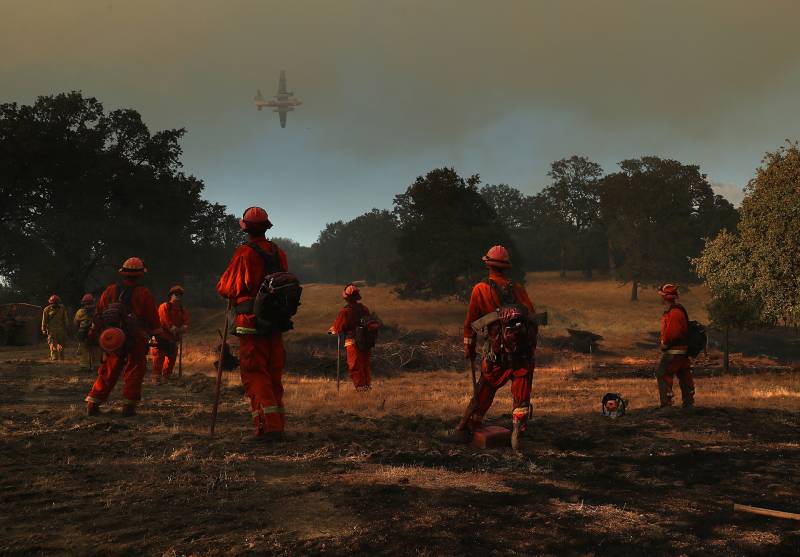“The demand for hand crews far surpasses the need,” said Jeremy Rahn, a Cal Fire public information officer for the North Bay fires, at a press conference Wednesday.
The shortage stems mainly from the large number of fires burning across the state — well over 500. But thinning ranks in California’s inmate firefighting camps, the result of the state’s attempt to slow the spread of COVID-19 in the prison system, have exacerbated the need for replacements.
Just weeks ago, many incarcerated firefighters were isolated in lockdown after potential exposure to the coronavirus sidelined more than half of the inmate crews, depriving California of a key firefighting resource as it entered peak fire season.
Now, officials with the California Department of Corrections and and Rehabilitation say all fire camp inmates at the fire camps have been released from quarantine.
But since July 10, the state has sent home at least 700 inmates from the camps, including 331 firefighters and the rest in support roles, through an early-release order in the wake of COVID-19’s deadly spread through state prisons, including San Quentin in Marin County, resulting in thousands of infections and dozens of deaths.
Releasing the inmates has left the state with far fewer incarcerated firefighters than it could deploy in recent years. As of Aug. 20, more than 1,300 inmates from California’s state prison system were battling 19 different fires across the state, including the big complex blazes in the Bay Area. But in 2018, California had 3,500 firefighter inmates on hand, down from 4,300 two years before.
Gov. Gavin Newsom on Friday minimized the effect of the early prisoner releases on the state’s firefighting capacity.
“Precisely to address that issue, precisely to address that concern,” he said, in July he authorized $72 million for the hire of 858 seasonal firefighters as replacements for the freed inmates. “We did it in anticipation. We didn’t react.”
But Thom Porter, director of Cal Fire, acknowledged during a July press conference that the agency doesn’t “expect this season to make it to full capacity with inmate crews.”
David Fathi, director of the ACLU National Prison Project, says he’s especially concerned inmates will have to work “harder, longer” because of the reduced number of incarcerated fire crews.
“These are not people who are doing telemarketing or folding laundry,” he said. “This is dangerous work, working with very dangerous tools like chainsaws and axes, with longer hours and less rest. Fatigue obviously increases the risk of accidents.”

